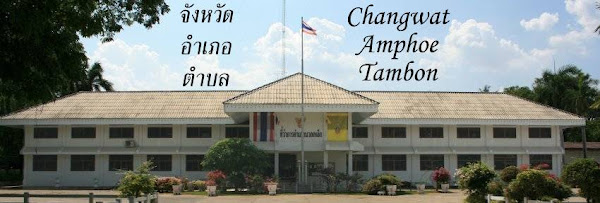At first, the opposition Phuea Thai party has announced her Thaksin-approved election program, and among utter nonsense like a town on land reclaimed from the sea (to be drowned with global warming) one point they kept from former member and leader Chavalit is the idea of giving the three southern Muslim dominated provinces some kind of autonomy or increased self-government.
Pheu Thai MP for Yala Sukarno Matha said yesterday the party would go ahead with the policy of establishing a Pattani City - as well as pushing for the drafting of a Pattani Bill to set up a new administrative zone covering the border provinces of Yala, Pattani, and Narathiwat.As usual, the newspaper article does not contain any hard facts on what is actually meant by this, whether it means just an elected province governor, a change of the whole province administration into something like the Bangkok city administration, what this means to the already existing local government units like PAO, TAOs and municipalities. And to me the main question - why should only the three southernmost provinces get an improved local government - only because the insurgents shed the light on the lack of any powerful local administration?
He said the proposed law would allow local residents to elect their provincial governors and give more power to local administrations.
[Source: The Nation, April 27 2011, "Pheu Thai to retain Pattani City plan"]
This is where the second article comes in, same newspaper, same date.
A plan to decentralise local administration - proposed recently by the National Reform Committee led by former premier Anand Panyarachun - met fierce opposition and outrage from the Government Officers Association of Thailand yesterday.Now it is not that much surprising that the existing bureaucracy is quite happy with the status quo and don't want any loss of their powers towards local administrations. And quite some more interesting quotes from the same article.
They said if such reform was carried out, Thailand would cease to exist as a unitary state and collapse and lose its sovereignty.
[Source: The Nation, April 27 2011, "Strong opposition to reform plan"]
Kamol said the proposed reform did not make sense, as local people would not be ready even "50 years from now".Reminds me on what I read about the start of Thai democracy after the 1932 coup, with the parliament having appointed members until the voters get mature enough to choose correctly.
Senior members of the association claimed the plan would see an end to the role of the Interior Ministry in appointing village headmen, kamnans, as well as district chiefs and provincial governors.Strangely, both village headmen as well as kamnan are elected, and that for a long time already. Its only that as they serve as subordinate within the central administration, they have to confirmed by the Ministry of Interior. Might be too much condensed writing in the article which lost this detail, but also distorted the facts then.
The association, which met and discussed the matter, concluded that local people were not ready to elect representatives at all levels and they had concerns that people running for local polls were corrupt. Local people needed to be supervised by the Interior Ministry's appointed officials, they argued.The appointed headmen are immune to vote-buying unlike the elected local administration? Well, at first the headmen are elected as well, and of course there have been (see e.g. the book Democracy, Development and Decentralization in Provincial Thailand by Daniel Arghiros) and with all likelihood still are illegal activities in these elections. Besides, it's a strange viewpoint to think of the cash given for votes being the only thing a politician is doing for his electorate, in a normal democracy someone is elected for the things he will do in the upcoming term in office.
[...]
"The worst thing would be to abolish [the appointed] village headmen and kamnan who are local representatives [of the Ministry]. Are those elected representatives really representing the people? Those who voted for the Tambon Administrative Organisations (TAO) chiefs were told they had already received money [for voting for a vote-buying candidate] so they couldn't make any demands [for assistance] afterwards. Our kamnans and village heads are different, however."
It will be interesting to see if all the discussion around decentralization will continue after the next national elections are done, or if it was just empty promises to get more votes in the elections.







